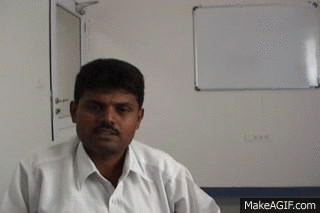- Joined
- Jul 25, 2008
- Messages
- 12,689
- Points
- 113
SG signed CECA agreement so that Temasek can invest in India.
Temasek and its highly-paid management benefits but who loses?
Sinkies who lose their jobs to the workers coming from India.

Mahindra and Mahindra is aggressively trying to lift the share of its electric SUVs to catch up with rival Tata Motors. PHOTO: REUTERS
August 4, 2023
BENGALURU – Mahindra and Mahindra has raised US$145 million (S$195 million) from Temasek for its electric vehicle unit at a valuation of up to 805.8 billion rupees (S$13.1 billion), the latest fundraising by the Indian automaker as it looks to ramp up EV sales.
Temasek will take up to a 3 per cent stake in the company that in 2022 raised up to US$250 million from British International Investments (BII) at a valuation of as much as US$9.1 billion.
The automaker is aggressively trying to lift the share of its electric SUVs in a market that is dominated by larger rival Tata Motors, as the government pushes to grow EV sales to 30 per cent by 2030 from less than 2 per cent today.
Mahindra said it expects electric models to make up between 20 and 30 per cent of its total SUV sales by March 2030 – pushing back an outlook it gave in 2022 of meeting that target by 2027.
“Temasek’s investment is a step forward, as we execute our strategy towards future leadership in electric SUVs,” Mahindra CEO Anish Shah said in a news release.
India’s EV market is small but growing, attracting interest from global players including Tesla.
The world’s biggest EV maker is in talks with the government to invest in a potential factory that would build low-cost EVs, targeting a price of around US$24,000.
Analysts say this could pose stiff competition for local automakers.
Rival Tata Motors in 2021 raised US$1 billion from TPG’s Rise Climate Fund at a valuation of about US$9.1 billion.
Mahindra has been in talks with global investors, including green funds and private equity players, for nearly a year to raise between US$250 million and US$500 million to accelerate its EV plans. REUTERS
Temasek and its highly-paid management benefits but who loses?
Sinkies who lose their jobs to the workers coming from India.
Mahindra’s EV unit raises funds from Temasek at $13.1b valuation

Mahindra and Mahindra is aggressively trying to lift the share of its electric SUVs to catch up with rival Tata Motors. PHOTO: REUTERS
August 4, 2023
BENGALURU – Mahindra and Mahindra has raised US$145 million (S$195 million) from Temasek for its electric vehicle unit at a valuation of up to 805.8 billion rupees (S$13.1 billion), the latest fundraising by the Indian automaker as it looks to ramp up EV sales.
Temasek will take up to a 3 per cent stake in the company that in 2022 raised up to US$250 million from British International Investments (BII) at a valuation of as much as US$9.1 billion.
The automaker is aggressively trying to lift the share of its electric SUVs in a market that is dominated by larger rival Tata Motors, as the government pushes to grow EV sales to 30 per cent by 2030 from less than 2 per cent today.
Mahindra said it expects electric models to make up between 20 and 30 per cent of its total SUV sales by March 2030 – pushing back an outlook it gave in 2022 of meeting that target by 2027.
“Temasek’s investment is a step forward, as we execute our strategy towards future leadership in electric SUVs,” Mahindra CEO Anish Shah said in a news release.
India’s EV market is small but growing, attracting interest from global players including Tesla.
The world’s biggest EV maker is in talks with the government to invest in a potential factory that would build low-cost EVs, targeting a price of around US$24,000.
Analysts say this could pose stiff competition for local automakers.
Rival Tata Motors in 2021 raised US$1 billion from TPG’s Rise Climate Fund at a valuation of about US$9.1 billion.
Mahindra has been in talks with global investors, including green funds and private equity players, for nearly a year to raise between US$250 million and US$500 million to accelerate its EV plans. REUTERS


























